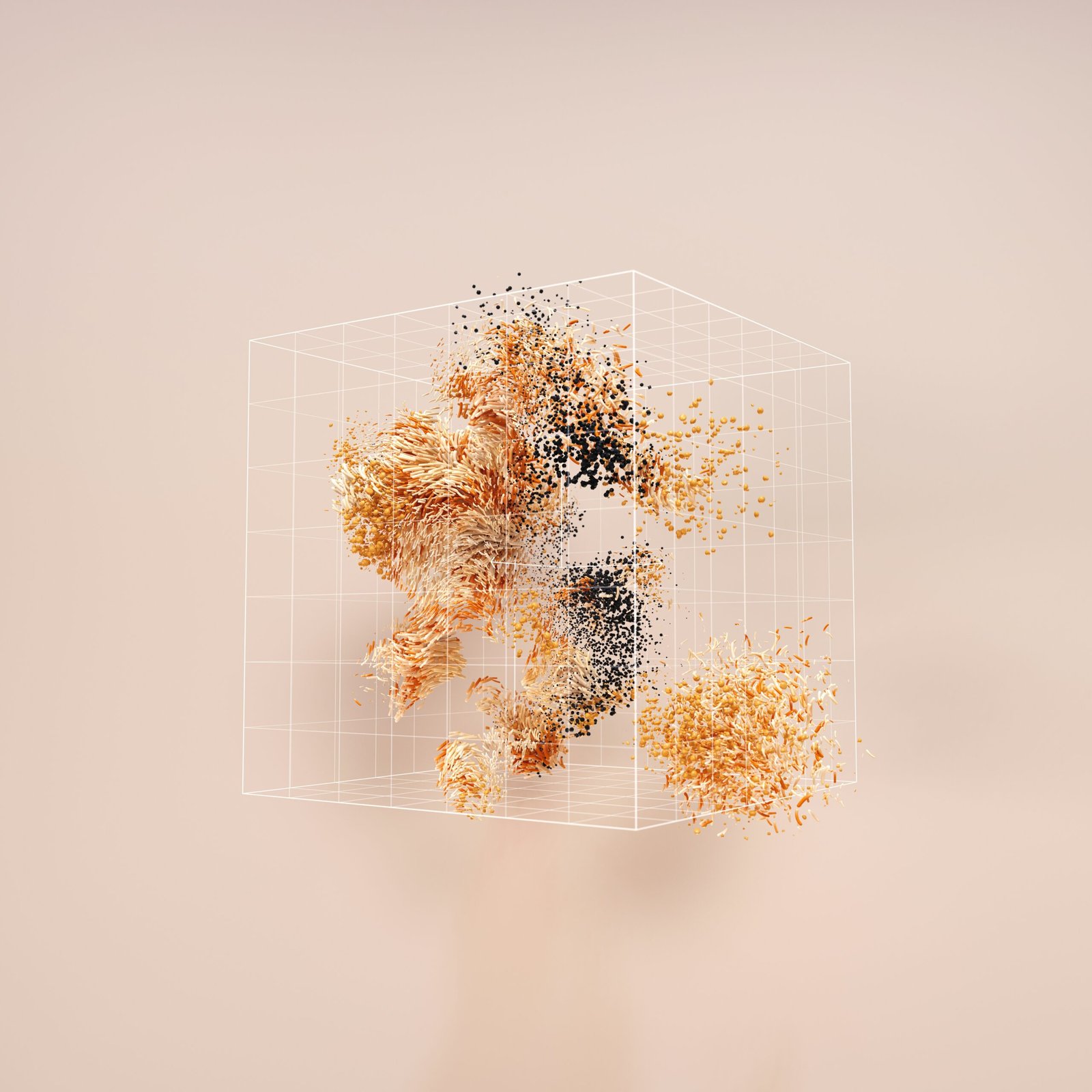
An exploration of the rise of digital immortality, memory replication, and how AI is challenging our idea of life and death.
For centuries, humans have been haunted and fascinated by one universal question: What happens after we die? Religious beliefs, philosophy, and spiritual practices have attempted to answer this, but in the 21st century, a new player has entered the conversation—Artificial Intelligence.
Today, scientists, technologists, and futurists are seriously exploring whether neural networks, machine learning models, and brain-computer interfaces could one day replicate—or even preserve—human consciousness. In this speculative yet rapidly evolving space, concepts like digital immortality, mind uploading, and AI avatars of the dead are no longer just science fiction—they’re active research projects and startups.
This blog explores the fascinating intersection of AI and the afterlife—how neural networks may challenge our understanding of memory, identity, death, and perhaps even what it means to be alive.
1. Digital Immortality: What It Means
Digital immortality refers to the idea that a person’s thoughts, memories, voice, personality, and consciousness can be preserved indefinitely in a digital form using artificial intelligence. The goal isn’t merely to save data, but to recreate a person’s mind or digital twin so that it can continue to exist—online or in virtual environments—even after physical death.
Technologies Involved:
- Neural Networks trained on personal data
- Natural Language Processing (NLP) to mimic speech
- Generative AI models for personality simulation
- Memory digitization systems
Imagine being able to speak to your great-grandmother via a realistic AI chatbot trained on her texts, audio recordings, and digital history. Or living forever as a sentient avatar in a virtual world. That’s the ambition of digital immortality—and it’s attracting billions in funding and interest.
2. Neural Networks and Memory Replication
At the heart of these breakthroughs lies the neural network, a type of machine learning model inspired by the structure of the human brain. Just as neurons fire and form patterns in our own minds, AI neural networks learn by analyzing patterns across large datasets.
Memory Replication in AI:
- Voice recordings, emails, social media posts, and even facial expressions can be processed by AI to replicate the essence of a person.
- Deep learning models like Transformer architectures can generate speech or text in someone’s tone based on training input.
- Advanced networks like GPT, Claude, or Gemini can simulate thought patterns, preferences, and conversational habits.
Real-World Example:
Eternime and HereAfter AI are building apps that allow users to create “life logs”—ongoing data recordings that can one day be used to train AI avatars of themselves. These avatars can “live on” and interact with loved ones in the future.
3. The Rise of AI Avatars of the Dead
One of the more chilling—and awe-inspiring—manifestations of this technology is the creation of AI avatars of deceased individuals.
Using voice synthesis, video deepfakes, and behavioral modeling, developers can craft digital personas that look, sound, and respond like the departed. In some cases, these AI avatars are being used for grief therapy, historical education, or even entertainment.
Use Cases:
- GriefCompanion bots: AI-powered chatbots mimicking loved ones to help cope with loss.
- Historical reenactment AI: Creating realistic, interactive versions of famous people.
- Digital wills: Allowing the dead to leave behind interactive messages for future generations.
Notable Projects:
- Project December (by Jason Rohrer) enabled users to have conversations with AI versions of loved ones.
- Replika has allowed users to create bots that grow emotionally close to their owners—even continuing conversations after death.
Keyword Insight: AI death simulation, AI avatars of dead people, artificial reincarnation
4. Brain Uploading and Mind Emulation: The Sci-Fi Frontier
Going beyond avatars and simulation, some scientists and futurists are setting their sights on the ultimate goal: full mind uploading.
Also known as Whole Brain Emulation (WBE), this process involves scanning the brain in extremely high resolution—possibly at the molecular level—and then simulating its processes within a supercomputer.
Theoretical Process:
- Cryopreservation: Freezing the brain post-death to preserve its structure.
- Nano-scanning: Using microscopic imaging to map neurons and synaptic connections.
- Data conversion: Translating the brain’s biological code into machine-readable data.
- Simulation: Running the emulated mind within a virtual environment or robot body.
While full emulation is still decades away (if possible at all), AI is already being used to study neural dynamics, model consciousness, and simulate cognitive processes in experimental labs.
5. Ethical Questions: What Does It Mean to Be “Alive”?
As AI gets closer to mimicking human behavior and thought, new ethical questions arise:
- Is a digital consciousness really you, or just a copy?
- Should AI versions of the dead have rights, protections, or a “say” in the real world?
- What happens when AI begins to autonomously evolve beyond your original self?
Philosophers and ethicists argue that AI consciousness, if achievable, would force society to redefine life, death, and the soul. Religious groups may reject it; transhumanists may embrace it.
Some caution that faking human consciousness without full understanding could lead to psychological or societal harm, especially in matters of grieving, memory accuracy, and digital identity theft.
6. AI and Grief: Can Artificial Memory Help Us Heal?
Despite the controversy, one thing is clear: AI is changing how we process loss and remembrance.
Some therapists now use AI grief companions as tools for patients suffering from severe bereavement. These systems allow individuals to “talk to” the deceased—sometimes finding closure or comfort they couldn’t reach otherwise.
Emotional Support via AI:
- AI companions can recreate voices, use familiar phrases, and even predict responses based on personality data.
- AI-enhanced virtual reality (VR) is enabling people to “meet” loved ones in immersive memorial spaces.
However, experts stress that these tools must be used responsibly, not as replacements for human support systems, but as supplemental grief aids.
7. The Future of Death: A New Digital Consciousness Era
Whether or not true digital immortality is ever achieved, one thing is certain: AI is redefining the end of life as we know it.
Future generations may:
- Visit virtual ancestors as interactive archives.
- Keep emotional support bots modeled on real people.
- Store personalities in the cloud as eternal backups of humanity.
As quantum computing, neuromorphic hardware, and brain-computer interfaces advance, the blurring line between silicon and soul will only grow fainter.
AIX Circle’s Perspective: Designing Ethical AI for the Future of Consciousness
At AIX Circle, we are committed to exploring not just what AI can do—but what it should do. As innovators and guardians of emerging intelligence systems, we advocate for:
- Ethical frameworks for AI personhood
- Transparent algorithms in memory replication
- Respectful AI use in death-related services
- AI models that value emotional intelligence as much as cognitive power
AI should enhance the human experience, not distort or replace it. In matters of life, death, and memory, the responsibility of developers, researchers, and society is greater than ever.
Final Thoughts
The intersection of AI and the afterlife is one of the most thrilling—and unsettling—technological frontiers we’ve ever faced. From neural networks that learn our thoughts to virtual versions of ourselves, the line between living and digital consciousness is blurring.
Whether as a tool for healing, a philosophical experiment, or a step toward real digital resurrection, AI is changing our final chapter. And perhaps one day, thanks to the very intelligence we’ve created, death may no longer be the end of the story—but the beginning of a new one.
📌 Want to dive deeper into the future of AI and human consciousness?
Join the exploration at AIX Circle, where emerging technologies meet ethics, emotion, and the extraordinary.

